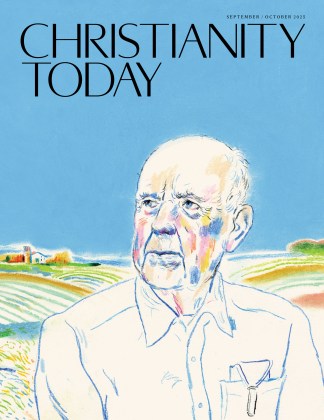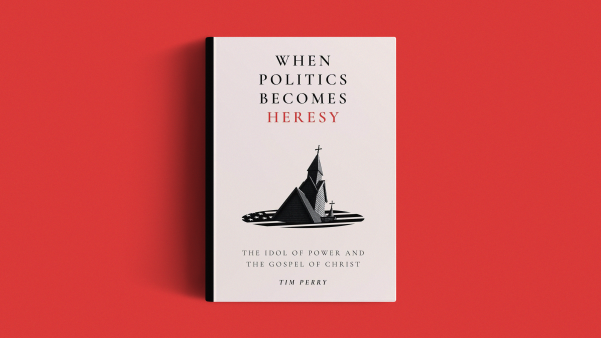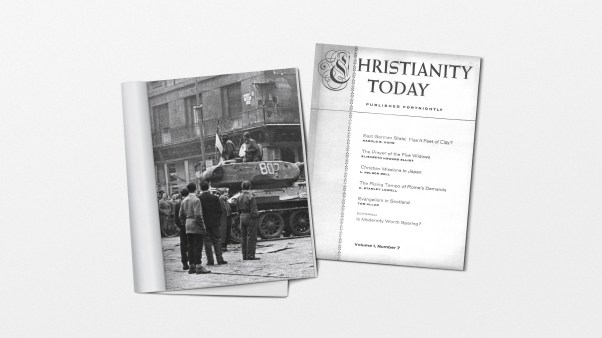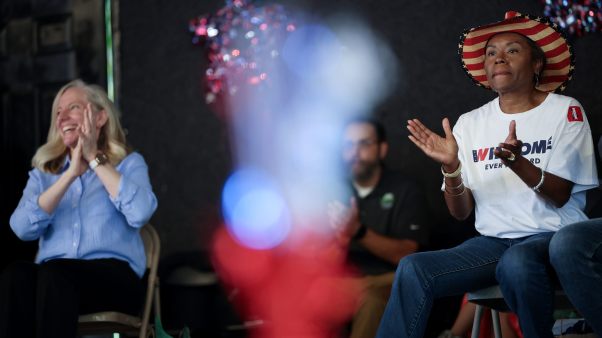The following books cover different aspects of the cultural context of early Christianity. The subject is broad enough that, as a friend of mine commented, "Fifty would be easier than five!" This list does not include general reference works, such as the Dictionary of New Testament Background, Oxford Classical Dictionary, and Dictionary of Judaism in the Biblical Period, 450 B.C.E. to 600 C.E.
 At no point in Romanism is the conflict between tradition and Scripture more evident than in the cult of Mary. One can confidently predict that the more Scripture is studied, the more the foundations of the Marian cult will be shaken. So far, however, official pronouncements have shown no indications of any desire to curb this cult. On the contrary, modern popes have been the foremost in promoting it. From the Roman Catholic viewpoint, it may be said that we have been living in a Marian era since the middle of last century. At no point in Romanism is the conflict between tradition and Scripture more evident than in the cult of Mary. One can confidently predict that the more Scripture is studied, the more the foundations of the Marian cult will be shaken. So far, however, official pronouncements have shown no indications of any desire to curb this cult. On the contrary, modern popes have been the foremost in promoting it. From the Roman Catholic viewpoint, it may be said that we have been living in a Marian era since the middle of last century.The dogma of the Immaculate Conception of the Blessed Virgin was proclaimed in 1854 by Pope Pius XI, speaking infallibly ex cathedra; 1858 saw the institution of the shrine of Mary at Lourdes in France and 1917 the shrine of Fatima in Portugal, not to mention many other less celebrated centers where the cult of Mary thrives; in 1891 Pope Leo XIII affirmed in his encyclical Octobri mense that, “as no one can come to the Most High Father except through the Son, so, generally, no one can come to Christ except through Mary”; in 1904 Pope Pius X in his encyclical Ad diem praised Mary as the restorer of a fallen world and the dispenser of all the gifts of grace won for us through the death of Christ, and in 1907 he sanctioned February 11 as the Feast of the Apparition of Our Lady of Lourdes; in 1918 Pope Benedict XV stated that Mary had redeemed the human race in cooperation with Christ, and his successor Pope Pius XI approved the practice of calling Mary Co-Redemptrix”; in 1942 Pope Pius XII dedicated the world to Mary’s Immaculate Heart; in 1950 the same pope promulgated the dogma of the Bodily Assumption of Mary, speaking infallibly ex cathedra, and in 1954 he inaugurated May 31 as the Feast of Mary Queen of Heaven. But surely the ultimate was said in 1946, again by Pope Pius XII, at the time of the coronation of Mary’s statue at Fatima: “Mary is indeed worthy to receive honor and might and glory. She is exalted to hypostatic union with the Blessed Trinity.… Her kingdom is as great as her Son’s and God’s.… Mary’s kingdom is identical with the kingdom of God.” To the ear attuned to the teaching of the New Testament such affirmations are blasphemous, both because they derogate from the glory and merit that are due to Christ alone as our unique Redeemer and Mediator and because they exalt to a position of equality with the eternal Creator one who, though blessed, was no more than a creature. This mother—goddess cult—which, as has often been pointed out, has its roots in paganism rather than in apostolic Christianity, and which in effect gives to Mary the Holy Spirit’s place in the Trinity—is disruptive of the very heart of the Gospel of the grace of God in and through Christ alone. As Professor Wilhelm Niesel has said, “Here we come to the heart of the matter. Here the gulf which separates Rome from the Church of the Gospel becomes quite visible” (Reformed Symbolics, Edinburgh, 1962, p. 115). Bishop Gustaf Aulén, speaking of modern Roman theologians and the Marian dogmas of 1854 and 1950, complains: In neither case have they shown any concern to justify these dogmas on the basis of Scripture or even the tradition of the ancient church. In reality these two dogmas are foreign to Scripture and contrary to the ancient tradition of the church. Indeed, the development of Mariological dogma in the Roman Catholic Church affords a startling example of the assertion by the teaching office of its supremacy over the authority of Scripture and even, in some measure, over tradition. To quote Bishop Aulén again: This indicates with perfect clarity that the infallible office of teaching by no means guarantees the integrity of the interpretation of Scripture. On the contrary, it results in a dissolution of integrity. The ecclesiastical teaching office goes its own way and tries to compel intractable Scripture to follow [Reformation and Catholicity, Edinburgh, 1962, p. 145]. Mariological dogma stands out as the highpoint to which the logic of the Roman Catholic doctrine of man leads. If man, as Rome teaches, contributes to his own justification by a proper disposition, good works, penances, and, in the end, purgatory, then it follows that man has a share with God in the accomplishment of his salvation. And it follows, further, that man has a measure of independence and sovereignty alongside the independence and sovereignty of Almighty God. The distinction between God and man is reduced to one that is no longer absolute but relative, not only in the matter of ability but even in that of being. This human potential is symbolized in a concrete manner in the person of Mary, free from taint of sin, collaborating in redemption—without whose consent and cooperation, indeed, our redemption would not have been effected—and exalted to the heights of divinity as the queen-mother of heaven, there to intercede with a mother’s compassionate heart and turn aside the displeasure of a less indulgent Mediator. Those who had hopes that the Second Vatican Council would apply the brakes to the rapidly advancing cult of Mary and seek to restore to Christ the uniqueness of his mediatorial office were soon disillusioned. On the first day of the council, October 11, 1962, Pope John XXIII declared at the very beginning of his opening speech that the assembled delegates were met together “under the auspices of the virgin Mother of God”; and that same speech concluded with a prayer to Mary, “Help of Christians, Help of Bishops,” to “dispose all things for a happy and propitious outcome” and, together with her spouse “St. Joseph, the holy Apostles Peter and Paul, St. John the Baptist, and St. John the Evangelist,” to intercede for them to God (The Documents of Vatican II, New York, 1966, pp. 710, 719; further references to this volume will use the abbreviation DV II followed by the page number). In his papal brief declaring the council closed, which was read on December 8, 1965, Pope Paul VI spoke to the same effect. These, however, are but straws in the wind compared with the concluding chapter of the Dogmatic Constitution of the Church—a document that, according to Father Avery Dulles, S. J., has been hailed “with something like unanimity” as “the most momentous achievement of the Council” (DV II, 10). The theme of this concluding chapter is “The Role of the Blessed Virgin Mary, Mother of God, in the Mystery of Christ and the Church.” In fairness it must be said that theologians and preachers are earnestly exhorted that ‘in treating of the unique dignity of the Mother of God” they should “carefully and equally avoid the falsity of exaggeration on the one hand and the excess of narrow-mindedness on the other” (DV II, 95); that it is explicitly stated that because Mary “belongs to the offspring of Adam” she is “one with all human beings in their need for salvation” (DV II, 86); and that assurance is given that “the maternal duty of Mary toward men in no way obscures or diminishes” the “unique mediation of Christ” (DV II, 90). But there is nothing new about all this; similar admonitions and reassurances have been uttered numerous times in the past. Protestations of scriptural orthodoxy have a hollow ring when they are used to justify teachings manifestly alien to the evangelical doctrine of Scripture. Besides, as has already been shown, the modern popes bear a heavy responsibility for the encouragement of the unbiblical exaggerations of the cult of Mary. Despite all qualifying clauses, the effect, in both logic and practice, of the Mariology of the Roman church is to rob Christ of the uniqueness of his redemptive and mediatorial office. How can it be otherwise, when Christ declares that it is he who gives life to the world (John 6:33), whereas the council, without disputing this, affirms that Mary “gave Life to the world” (DV II, 86); when the apostles consistently declare that the likeness to which we are to be conformed is that of Christ (Rom. 8:29; 2 Cor. 3:18; Phil. 3:21; 1 John 3:2), whereas the council affirms that Mary is “the Church’s model” and that those who “strive to increase in holiness … raise their eyes to Mary who shines forth to the whole community of the elect as a model of the virtues” (DV II, 86, 93); when the Scriptures consistently declare that Christ alone was without sin (2 Cor. 5:21; Heb. 4:15; 7:26; 1 Pet. 1:19; 2:22; 1 John 3:5), whereas the council affirms that Mary was “entirely holy and free from all stain of sin,” was “adorned from the first instant of her conception with the splendors of an entirely unique holiness,” and in what she subsequently did was “impeded by no sin” (DV II, 88); and when the New Testament consistently declares that Christ is the sole and unique Mediator between God and man and the only Redeemer of our race (1 Tim. 2:5; Heb. 9:15; John 14:6; Acts 4:12; 1 John 2:1), whereas the council—though, as we have mentioned, it acknowledges this—applies the title “Mediatrix” to Mary and affirms that by her “cooperating in the work of human salvation” there was a “union of the Mother with the Son in the work of salvation” (DV II, 84). In other words, though the term itself is not used, Vatican II propounds the heresy that Mary is Co-redemptrix with Christ. It is deplorable that the council’s work of aggiornamento did not extend to two scriptural mistranslations that for centuries have done heavy duty as props for the mystique of Mary but that are discredited by the humblest linguistic tyro. For so erudite an assembly to have dressed up these two mistranslated verses (Genesis 3:15 and Luke 1:28) and pressed them into service yet again is inexcusable. In Genesis 3:15 the Hebrew pronoun that stands for the seed of the woman is masculine in gender, agreeing with the Hebrew noun for “seed.” The Vulgate (Latin) version, however, misrendered it as feminine (ipsa, “she”), and on the strength of this the verse was commonly applied as though it were prophetic of the role of Mary. The Jerusalem Bible, to cite the most recent English version, renders the clause legitimately, “It will crush your head.” But the council, evidently leaning on the old mistranslation, states that Mary “is already prophetically foreshadowed in that victory over the serpent which was promised to our first parents after their fall into sin (cf. Gen. 3:15)” (DV II, 87). Again, the Vulgate wrongly rendered the Greek of Luke 1:28 as Ave, gratia plena (“Hail, thou that art full of grace”), and for centuries this rendering has been used to bolster up the doctrine of the unique sinlessness and holiness of Mary. The passage is translated legitimately, once more, in the Jerusalem Bible: “Rejoice, so highly favored!” But the council persists in buttressing its concept of Mary’s “entirely unique holiness” by adducing the manner in which she was “greeted by an angel messenger as ‘full of grace’ (cf. Lk. 1:28)” (DV II, 88). To mishandle Scripture can only lead, as it has done, to confusion. Far from restraining the tide of Mariolatry, the Second Vatican Council has strongly endorsed it, admonishing “all the sons of the Church that the cult, especially the liturgical cult, of the Blessed Virgin be generously fostered,” and charging “that practices and exercises of devotion toward her be treasured as recommended by the teaching authority of the Church in the course of centuries, and that those decrees issued in earlier times regarding the veneration of images of Christ, the Blessed Virgin, and the saints be religiously observed” (DV II, 94). The concluding exhortation of the Dogmatic Constitution of the Church makes this appeal: Let the entire body of the faithful pour forth persevering prayer to the Mother of God and Mother of men. Let them implore that she who aided the beginnings of the Church by her prayers may now, exalted as she is in heaven above all the saints and angels, intercede with her Son … [DV II, 96]. How else can this be understood except as an infringement of the unique Mediatorship of Christ? And if the mediation of Mary is necessary before we can be heard in heaven, what has happened to that boldness with which the believer is invited to “enter into the holiest by the blood of Jesus” and to that “full assurance of faith” with which we are urged to draw near to God through him who is our great High Priest, who ever lives to make intercession for us in heaven (Heb. 10:19–23; 7:25). Nothing less than the Gospel of our redemption is at stake here. Today the challenge comes afresh to us and to our Roman Catholic friends to “hold fast the profession of our faith without wavering.” The Gospel forbids us to acknowledge any mediator or intercessor or means of entry into the presence of God other than our Saviour Christ, who alone is the Way, the Truth, and the Life. Philip Edgcumbe Hughes is editor of the “Churchman,” Anglican theological quarterly, and visiting professor of New Testament at Columbia Seminary, Decatur, Georgia. Jesus was a new star in the firmament of religious teachers. His character was so majestic that many followed him and memorized his sayings. He spoke with authority and not like the scribes. Yet always he stood upon the Scriptures. You and I dwell in magnificent company when we study the Bible and submit to its authority. We stand with Christ. And our ranks are swelled by Augustine, Huss, Tyndale, Wycliffe, Luther, Calvin, Wesley, and a host of others. We give thanks for Scripture. May it yet be said of us, as the heavenly Christ said of the church of ancient Philadelphia, “For thou hast a little strength, and hast kept my word, and hast not denied my name.”—The Rev. Harry B. Schultheis, minister of the United Presbyterian Church in the U. S. A., Gilroy, California. Magnificent Company |
Cambridge Companion to the Age of Augustus Karl Galinsky, editor |
The Cambridge Companion provides an up-to-date introduction to the period surrounding the life of Jesus. The book groups articles according to political history, intellectual and social developments, the impact of the emperor, art, and literature, and concludes with an appendix by L. Michael White on Herod and the Jewish experience.
|
* * * |
 The doubts that tormented him coiled like serpents out of the dungeon walls. Sitting alone in the dank darkness, he seemed to feel them creep out of the crevices of the rocks, raise their heads, and strike at him with horrible hissing.For almost ten months he had been waiting in the dungeon of Marchaerus, Herod’s fortress-prison overlooking the Dead Sea, waiting for the kingdom that did not come. Chained in darkness, he had waited—was it twice as long?—yes, almost twice as long as the five months of his brief ministry, those five consuming months when he had preached in the wilderness with all the conviction and fire of his soul: “Repent, for the kingdom of heaven is at hand! Prepare the way of the Lord, make his paths straight!”Was it all to end in this—those more than thirty years in which he had been prepared for the task to which he felt called by divine compulsion … his mysterious birth … the Voice that called him as a youth to live in the wilderness … the solitary years of communing with God in which he observed the Nazarite vows of self-denial and dedication … and then the bursting cry that seized him: “I am the voice of one crying in the wilderness, as foretold by the prophet Isaiah”? So brief a ministry—and now.…Slowly he turned his gaze to the iron gate. He could tell by the deepening gloom in the corridor that the day was ending. Silence here, like the silence of a tomb. Not the free, vibrant silence of the sun-filled desert with birdsongs and the eternal blue overhead. Silence like death.Would the gate never open?Yes, the guard came through twice a day to bring him his scanty meal, or sometimes to take him to the palace when Herod stopped at Marchaerus on his trips to Mesopotamia. His faithful disciples came to visit him, too.He recalled the last visit of Hillel and Seth. What astounding news they had brought of the preaching and miracles of Jesus of Nazareth—how he made the blind to see and the lame to walk, how he cured all kinds of diseases. But there were always the insoluble questions: Where were the fires of judgment foretold by Isaiah and the prophets? Where was the kingdom? Where was the King? Could it be—the doubt struck him with the horror of blasphemy—could it be that Jesus of Nazareth was after all only a prophet like himself? A miracle-worker sent by God—but only a man?In the anxiety of his thoughts, the Baptizer stood up, and the rattling of the chain bound to his ankle broke the stillness. He paced the circle of the dungeon, his hands running over the walls that were cut deep into the rock under the fortress floor.God he knew. The Scriptures he knew—had they not been his daily instruction in his youth? Had not the words of Isaiah and the prophets burned themselves into his soul during those years of preparation in the wilderness?But Jesus of Nazereth—was he the One prophesied? The One who would come as a refiner’s fire and as fuller’s soap? And as for himself, was he indeed the herald who would come in the spirit of Elijah to proclaim the great and terrible day of the Lord? Or had it all been the product of delusion? Had an eager imagination caused him to see and hear things that were not there?In the dungeon darkness, tears coursed down his face. He dropped to his knees and cried out in the agony of conflict: “Lord, help me to learn thy lessons! Teach me thy truth! For I am blind as Herod, unless thou openest my eyes.”And as he wept and prayed, a thought came to him, first dimly, then more clearly. He must go humbly to the One who alone could answer the great question that rocked his soul.He stood up, and the darkness seemed to fall away. He walked in measured steps from wall to wall. “Art thou he that cometh, or look we for another?” Surely it was God who had guided him to this—a thought so bold he would not have dreamed of it had not desperation brought him to it. He would send Hillel and Seth to Jesus with that ringing question.…The wait was not long this time, only a few days. He had waited long now for many things, waited as if there were no end to waiting. “Wait we for thee, or wait we for another?” With the answer—whatever it might be—waiting would end.Footsteps and the sound of voices echoed through the rocky cavern beneath the citadel. Then the great key rattled in the dungeon gate, and the guard admitted Hillel and Seth. Even in the gloom, the Baptizer could see that their faces were drawn with perplexity. He offered them his bench and stood facing them.“Speak, Hillel. I do not fear the answer.” He could see they were reluctant to begin.“At first he did not answer us” said Hillel. “Instead, he ministered to the crowds that thronged him. Before our very eyes he cured many of diseases and plagues, and cast out demons. To many that were blind he gave sight.”“Never has there been such a prophet in Israel!” Seth exclaimed.“At last he came to us,” Hillel continued. “We asked him the question, and this is all he answered ‘Go and tell John what you have seen and heard: the blind receive their sight, the lame walk, lepers are cleansed, and the deaf hear, the dead are raised up, the poor have good tidings preached to them.’ Then he added, ‘And blessed is he who takes no offense at me.’ ”The words touched the Baptizer’s soul with instant recognition. “He turns us back to the Scriptures to find him!” he said. “These are the words Isaiah used as he prophesied concerning the Christ! The Voice of the Scriptures and the Voice of Jesus of Nazareth are one Voice.”Seth and Hillel returned his joyous look with one of incredulity. “But the Scriptures speak of fiery judgment!”“True. But they speak of the One who comes in mercy,” said John. “Somehow we have failed to understand what the prophets have told us. We have not grasped the order of the divine plan. I charge you, my friends, go to the synogogue and study in the Book of Isaiah those portions that Jesus has spoken to you. His answer to us is clear ‘This day is the Scripture fulfilled in your ears.’ ”“But we do not understand.”“There are many things I do not understand either. In this school to which he has led me, I must give myself to prayer. But I know that God has answered. Jesus of Nazareth is indeed the Lamb of God who fulfills the words of the prophets.”MARY’S VISIT TO ELIZABETHFrom the German of Rainer Maria RilkeMariae HeimsuchungHer step at first was still as light as airOn the Judean hills; yet, paused for breathOn some steep climb, she was again awareOf what now led her to Elizabeth—Her body’s wonder. So she stood to viewNot the land’s plenty but what spread around herExceeding all she ever dreamed or knew:The Greatness beyond earth that held and bound her.Then going on across the teeming landHer need to touch the other body thereGrew in her too … And when each laid her handUpon the other’s dress, the other’s hair,These women, filled with their own holy dower,Leaned on each other, weeping tears of joy.But, ah, the Saviour in her was still flowerWhile in her cousin’s womb the promised boyLeaped in love’s transport in that happy hour.Translated by M. WHITCOMB HESSSIMEON IN THE TEMPLE“For mine eyes have seen thy salvation.”What was he seeing as he held the Child(All aeons’ rack wrought into hope)?Did he discern the banked consuming fire,The coiled resolve of All-WealLodged at the Infant’s heart?Saw he a light clustered at those brows, annealing eyesOf gaze circumspect and reticently wise?Heard he the Word declared in Infant’s breathings,The verb of might unmeasured, potency that badeAtoms bind with force past knowing,That summoned from the patient voidBoth matter and its bane?In the stirrings of that swaddled breastFelt he the tremblings of the mountains of Old Time?And about him, did he catchThose muffled shouts of Hosts celestial,“Behold, behold, behold!Lord Sabaoth become a child,Become a pippin-child.Allelujah!”U. MILO KAUFMANNTHE WISE MEN SPEAKWe have seen starsCaught in evening pools of water,But never one like thisWe held between our camels’ ears,That shut us out from light and warmth,And merrymaking at the inns,On our journey past sleepy villages,Half-a-world to Bethlehem.We have seen many stars,But never one like this,With Fire that glittered on our camel-gear,And Light that took the fashion of a cross,Flooding all the earth.W. E. BARDTHE SKY ON A STRAWChristmas is Santa for sugarplum mindswho worship the world like a tinseled treewith drums and dolls free under the boughs;it’s vacation and wreaths to the more maturewho know you must give as well as get,who know cows can come only from cows;it’s a creche for Christians to adore,to smell the straw on their thick Persian floor,to let fodder-pricks redeem their door.THOMAS KRETZMilton D. Hunnex is professor and head of the department of philosophy at Willamette University, Salem, Oregon. He received the B.A. and M.A. degrees from the University of Redlands and the Ph.D. in the Inter-collegiate Program in Graduate Studies, Claremont, California. He is author of “Philosophies and Philosophers.” The doubts that tormented him coiled like serpents out of the dungeon walls. Sitting alone in the dank darkness, he seemed to feel them creep out of the crevices of the rocks, raise their heads, and strike at him with horrible hissing.For almost ten months he had been waiting in the dungeon of Marchaerus, Herod’s fortress-prison overlooking the Dead Sea, waiting for the kingdom that did not come. Chained in darkness, he had waited—was it twice as long?—yes, almost twice as long as the five months of his brief ministry, those five consuming months when he had preached in the wilderness with all the conviction and fire of his soul: “Repent, for the kingdom of heaven is at hand! Prepare the way of the Lord, make his paths straight!”Was it all to end in this—those more than thirty years in which he had been prepared for the task to which he felt called by divine compulsion … his mysterious birth … the Voice that called him as a youth to live in the wilderness … the solitary years of communing with God in which he observed the Nazarite vows of self-denial and dedication … and then the bursting cry that seized him: “I am the voice of one crying in the wilderness, as foretold by the prophet Isaiah”? So brief a ministry—and now.…Slowly he turned his gaze to the iron gate. He could tell by the deepening gloom in the corridor that the day was ending. Silence here, like the silence of a tomb. Not the free, vibrant silence of the sun-filled desert with birdsongs and the eternal blue overhead. Silence like death.Would the gate never open?Yes, the guard came through twice a day to bring him his scanty meal, or sometimes to take him to the palace when Herod stopped at Marchaerus on his trips to Mesopotamia. His faithful disciples came to visit him, too.He recalled the last visit of Hillel and Seth. What astounding news they had brought of the preaching and miracles of Jesus of Nazareth—how he made the blind to see and the lame to walk, how he cured all kinds of diseases. But there were always the insoluble questions: Where were the fires of judgment foretold by Isaiah and the prophets? Where was the kingdom? Where was the King? Could it be—the doubt struck him with the horror of blasphemy—could it be that Jesus of Nazareth was after all only a prophet like himself? A miracle-worker sent by God—but only a man?In the anxiety of his thoughts, the Baptizer stood up, and the rattling of the chain bound to his ankle broke the stillness. He paced the circle of the dungeon, his hands running over the walls that were cut deep into the rock under the fortress floor.God he knew. The Scriptures he knew—had they not been his daily instruction in his youth? Had not the words of Isaiah and the prophets burned themselves into his soul during those years of preparation in the wilderness?But Jesus of Nazereth—was he the One prophesied? The One who would come as a refiner’s fire and as fuller’s soap? And as for himself, was he indeed the herald who would come in the spirit of Elijah to proclaim the great and terrible day of the Lord? Or had it all been the product of delusion? Had an eager imagination caused him to see and hear things that were not there?In the dungeon darkness, tears coursed down his face. He dropped to his knees and cried out in the agony of conflict: “Lord, help me to learn thy lessons! Teach me thy truth! For I am blind as Herod, unless thou openest my eyes.”And as he wept and prayed, a thought came to him, first dimly, then more clearly. He must go humbly to the One who alone could answer the great question that rocked his soul.He stood up, and the darkness seemed to fall away. He walked in measured steps from wall to wall. “Art thou he that cometh, or look we for another?” Surely it was God who had guided him to this—a thought so bold he would not have dreamed of it had not desperation brought him to it. He would send Hillel and Seth to Jesus with that ringing question.…The wait was not long this time, only a few days. He had waited long now for many things, waited as if there were no end to waiting. “Wait we for thee, or wait we for another?” With the answer—whatever it might be—waiting would end.Footsteps and the sound of voices echoed through the rocky cavern beneath the citadel. Then the great key rattled in the dungeon gate, and the guard admitted Hillel and Seth. Even in the gloom, the Baptizer could see that their faces were drawn with perplexity. He offered them his bench and stood facing them.“Speak, Hillel. I do not fear the answer.” He could see they were reluctant to begin.“At first he did not answer us” said Hillel. “Instead, he ministered to the crowds that thronged him. Before our very eyes he cured many of diseases and plagues, and cast out demons. To many that were blind he gave sight.”“Never has there been such a prophet in Israel!” Seth exclaimed.“At last he came to us,” Hillel continued. “We asked him the question, and this is all he answered ‘Go and tell John what you have seen and heard: the blind receive their sight, the lame walk, lepers are cleansed, and the deaf hear, the dead are raised up, the poor have good tidings preached to them.’ Then he added, ‘And blessed is he who takes no offense at me.’ ”The words touched the Baptizer’s soul with instant recognition. “He turns us back to the Scriptures to find him!” he said. “These are the words Isaiah used as he prophesied concerning the Christ! The Voice of the Scriptures and the Voice of Jesus of Nazareth are one Voice.”Seth and Hillel returned his joyous look with one of incredulity. “But the Scriptures speak of fiery judgment!”“True. But they speak of the One who comes in mercy,” said John. “Somehow we have failed to understand what the prophets have told us. We have not grasped the order of the divine plan. I charge you, my friends, go to the synogogue and study in the Book of Isaiah those portions that Jesus has spoken to you. His answer to us is clear ‘This day is the Scripture fulfilled in your ears.’ ”“But we do not understand.”“There are many things I do not understand either. In this school to which he has led me, I must give myself to prayer. But I know that God has answered. Jesus of Nazareth is indeed the Lamb of God who fulfills the words of the prophets.”MARY’S VISIT TO ELIZABETHFrom the German of Rainer Maria RilkeMariae HeimsuchungHer step at first was still as light as airOn the Judean hills; yet, paused for breathOn some steep climb, she was again awareOf what now led her to Elizabeth—Her body’s wonder. So she stood to viewNot the land’s plenty but what spread around herExceeding all she ever dreamed or knew:The Greatness beyond earth that held and bound her.Then going on across the teeming landHer need to touch the other body thereGrew in her too … And when each laid her handUpon the other’s dress, the other’s hair,These women, filled with their own holy dower,Leaned on each other, weeping tears of joy.But, ah, the Saviour in her was still flowerWhile in her cousin’s womb the promised boyLeaped in love’s transport in that happy hour.Translated by M. WHITCOMB HESSSIMEON IN THE TEMPLE“For mine eyes have seen thy salvation.”What was he seeing as he held the Child(All aeons’ rack wrought into hope)?Did he discern the banked consuming fire,The coiled resolve of All-WealLodged at the Infant’s heart?Saw he a light clustered at those brows, annealing eyesOf gaze circumspect and reticently wise?Heard he the Word declared in Infant’s breathings,The verb of might unmeasured, potency that badeAtoms bind with force past knowing,That summoned from the patient voidBoth matter and its bane?In the stirrings of that swaddled breastFelt he the tremblings of the mountains of Old Time?And about him, did he catchThose muffled shouts of Hosts celestial,“Behold, behold, behold!Lord Sabaoth become a child,Become a pippin-child.Allelujah!”U. MILO KAUFMANNTHE WISE MEN SPEAKWe have seen starsCaught in evening pools of water,But never one like thisWe held between our camels’ ears,That shut us out from light and warmth,And merrymaking at the inns,On our journey past sleepy villages,Half-a-world to Bethlehem.We have seen many stars,But never one like this,With Fire that glittered on our camel-gear,And Light that took the fashion of a cross,Flooding all the earth.W. E. BARDTHE SKY ON A STRAWChristmas is Santa for sugarplum mindswho worship the world like a tinseled treewith drums and dolls free under the boughs;it’s vacation and wreaths to the more maturewho know you must give as well as get,who know cows can come only from cows;it’s a creche for Christians to adore,to smell the straw on their thick Persian floor,to let fodder-pricks redeem their door.THOMAS KRETZMilton D. Hunnex is professor and head of the department of philosophy at Willamette University, Salem, Oregon. He received the B.A. and M.A. degrees from the University of Redlands and the Ph.D. in the Inter-collegiate Program in Graduate Studies, Claremont, California. He is author of “Philosophies and Philosophers.” |
As the Romans Did: A Source Book in Roman Social History Jo Ann Shelton |
Shelton offers a judicious selection of well-translated texts accompanied by brief introductions and numerous explanatory footnotes. She groups her 425 texts (mostly literary, but also inscriptional and papyrological) under these headings: the structure of Roman society, families, marriage, housing and city life, domestic and personal concerns, education, occupations, slaves, freedmen, government and politics, the Roman army, the provinces, women in Roman society, leisure and entertainment, and religion and philosophy.
|
* * * |
 |
Rome and Jerusalem: The Clash of Ancient Civilizations Martin Goodman |
For Jews and Christians, the destruction of Jerusalem and its temple in A.D. 70 was the most important political event of the first century. Goodman tries to answer the question of why the Jewish revolt of A.D. 66-70 occurred and to examine its consequences (antisemitism). Setting this event in a wider history and emphasizing the political dimensions of the Roman-Jewish conflict, he studies what Romans and Jews had in common and also their differences on a wide variety of topics, including the order of society, the nature of humanity, lifestyles, government and justice, and social status.
|
* * * |
 The doubts that tormented him coiled like serpents out of the dungeon walls. Sitting alone in the dank darkness, he seemed to feel them creep out of the crevices of the rocks, raise their heads, and strike at him with horrible hissing.For almost ten months he had been waiting in the dungeon of Marchaerus, Herod’s fortress-prison overlooking the Dead Sea, waiting for the kingdom that did not come. Chained in darkness, he had waited—was it twice as long?—yes, almost twice as long as the five months of his brief ministry, those five consuming months when he had preached in the wilderness with all the conviction and fire of his soul: “Repent, for the kingdom of heaven is at hand! Prepare the way of the Lord, make his paths straight!”Was it all to end in this—those more than thirty years in which he had been prepared for the task to which he felt called by divine compulsion … his mysterious birth … the Voice that called him as a youth to live in the wilderness … the solitary years of communing with God in which he observed the Nazarite vows of self-denial and dedication … and then the bursting cry that seized him: “I am the voice of one crying in the wilderness, as foretold by the prophet Isaiah”? So brief a ministry—and now.…Slowly he turned his gaze to the iron gate. He could tell by the deepening gloom in the corridor that the day was ending. Silence here, like the silence of a tomb. Not the free, vibrant silence of the sun-filled desert with birdsongs and the eternal blue overhead. Silence like death.Would the gate never open?Yes, the guard came through twice a day to bring him his scanty meal, or sometimes to take him to the palace when Herod stopped at Marchaerus on his trips to Mesopotamia. His faithful disciples came to visit him, too.He recalled the last visit of Hillel and Seth. What astounding news they had brought of the preaching and miracles of Jesus of Nazareth—how he made the blind to see and the lame to walk, how he cured all kinds of diseases. But there were always the insoluble questions: Where were the fires of judgment foretold by Isaiah and the prophets? Where was the kingdom? Where was the King? Could it be—the doubt struck him with the horror of blasphemy—could it be that Jesus of Nazareth was after all only a prophet like himself? A miracle-worker sent by God—but only a man?In the anxiety of his thoughts, the Baptizer stood up, and the rattling of the chain bound to his ankle broke the stillness. He paced the circle of the dungeon, his hands running over the walls that were cut deep into the rock under the fortress floor.God he knew. The Scriptures he knew—had they not been his daily instruction in his youth? Had not the words of Isaiah and the prophets burned themselves into his soul during those years of preparation in the wilderness?But Jesus of Nazereth—was he the One prophesied? The One who would come as a refiner’s fire and as fuller’s soap? And as for himself, was he indeed the herald who would come in the spirit of Elijah to proclaim the great and terrible day of the Lord? Or had it all been the product of delusion? Had an eager imagination caused him to see and hear things that were not there?In the dungeon darkness, tears coursed down his face. He dropped to his knees and cried out in the agony of conflict: “Lord, help me to learn thy lessons! Teach me thy truth! For I am blind as Herod, unless thou openest my eyes.”And as he wept and prayed, a thought came to him, first dimly, then more clearly. He must go humbly to the One who alone could answer the great question that rocked his soul.He stood up, and the darkness seemed to fall away. He walked in measured steps from wall to wall. “Art thou he that cometh, or look we for another?” Surely it was God who had guided him to this—a thought so bold he would not have dreamed of it had not desperation brought him to it. He would send Hillel and Seth to Jesus with that ringing question.…The wait was not long this time, only a few days. He had waited long now for many things, waited as if there were no end to waiting. “Wait we for thee, or wait we for another?” With the answer—whatever it might be—waiting would end.Footsteps and the sound of voices echoed through the rocky cavern beneath the citadel. Then the great key rattled in the dungeon gate, and the guard admitted Hillel and Seth. Even in the gloom, the Baptizer could see that their faces were drawn with perplexity. He offered them his bench and stood facing them.“Speak, Hillel. I do not fear the answer.” He could see they were reluctant to begin.“At first he did not answer us” said Hillel. “Instead, he ministered to the crowds that thronged him. Before our very eyes he cured many of diseases and plagues, and cast out demons. To many that were blind he gave sight.”“Never has there been such a prophet in Israel!” Seth exclaimed.“At last he came to us,” Hillel continued. “We asked him the question, and this is all he answered ‘Go and tell John what you have seen and heard: the blind receive their sight, the lame walk, lepers are cleansed, and the deaf hear, the dead are raised up, the poor have good tidings preached to them.’ Then he added, ‘And blessed is he who takes no offense at me.’ ”The words touched the Baptizer’s soul with instant recognition. “He turns us back to the Scriptures to find him!” he said. “These are the words Isaiah used as he prophesied concerning the Christ! The Voice of the Scriptures and the Voice of Jesus of Nazareth are one Voice.”Seth and Hillel returned his joyous look with one of incredulity. “But the Scriptures speak of fiery judgment!”“True. But they speak of the One who comes in mercy,” said John. “Somehow we have failed to understand what the prophets have told us. We have not grasped the order of the divine plan. I charge you, my friends, go to the synogogue and study in the Book of Isaiah those portions that Jesus has spoken to you. His answer to us is clear ‘This day is the Scripture fulfilled in your ears.’ ”“But we do not understand.”“There are many things I do not understand either. In this school to which he has led me, I must give myself to prayer. But I know that God has answered. Jesus of Nazareth is indeed the Lamb of God who fulfills the words of the prophets.”MARY’S VISIT TO ELIZABETHFrom the German of Rainer Maria RilkeMariae HeimsuchungHer step at first was still as light as airOn the Judean hills; yet, paused for breathOn some steep climb, she was again awareOf what now led her to Elizabeth—Her body’s wonder. So she stood to viewNot the land’s plenty but what spread around herExceeding all she ever dreamed or knew:The Greatness beyond earth that held and bound her.Then going on across the teeming landHer need to touch the other body thereGrew in her too … And when each laid her handUpon the other’s dress, the other’s hair,These women, filled with their own holy dower,Leaned on each other, weeping tears of joy.But, ah, the Saviour in her was still flowerWhile in her cousin’s womb the promised boyLeaped in love’s transport in that happy hour.Translated by M. WHITCOMB HESSSIMEON IN THE TEMPLE“For mine eyes have seen thy salvation.”What was he seeing as he held the Child(All aeons’ rack wrought into hope)?Did he discern the banked consuming fire,The coiled resolve of All-WealLodged at the Infant’s heart?Saw he a light clustered at those brows, annealing eyesOf gaze circumspect and reticently wise?Heard he the Word declared in Infant’s breathings,The verb of might unmeasured, potency that badeAtoms bind with force past knowing,That summoned from the patient voidBoth matter and its bane?In the stirrings of that swaddled breastFelt he the tremblings of the mountains of Old Time?And about him, did he catchThose muffled shouts of Hosts celestial,“Behold, behold, behold!Lord Sabaoth become a child,Become a pippin-child.Allelujah!”U. MILO KAUFMANNTHE WISE MEN SPEAKWe have seen starsCaught in evening pools of water,But never one like thisWe held between our camels’ ears,That shut us out from light and warmth,And merrymaking at the inns,On our journey past sleepy villages,Half-a-world to Bethlehem.We have seen many stars,But never one like this,With Fire that glittered on our camel-gear,And Light that took the fashion of a cross,Flooding all the earth.W. E. BARDTHE SKY ON A STRAWChristmas is Santa for sugarplum mindswho worship the world like a tinseled treewith drums and dolls free under the boughs;it’s vacation and wreaths to the more maturewho know you must give as well as get,who know cows can come only from cows;it’s a creche for Christians to adore,to smell the straw on their thick Persian floor,to let fodder-pricks redeem their door.THOMAS KRETZMilton D. Hunnex is professor and head of the department of philosophy at Willamette University, Salem, Oregon. He received the B.A. and M.A. degrees from the University of Redlands and the Ph.D. in the Inter-collegiate Program in Graduate Studies, Claremont, California. He is author of “Philosophies and Philosophers.” The doubts that tormented him coiled like serpents out of the dungeon walls. Sitting alone in the dank darkness, he seemed to feel them creep out of the crevices of the rocks, raise their heads, and strike at him with horrible hissing.For almost ten months he had been waiting in the dungeon of Marchaerus, Herod’s fortress-prison overlooking the Dead Sea, waiting for the kingdom that did not come. Chained in darkness, he had waited—was it twice as long?—yes, almost twice as long as the five months of his brief ministry, those five consuming months when he had preached in the wilderness with all the conviction and fire of his soul: “Repent, for the kingdom of heaven is at hand! Prepare the way of the Lord, make his paths straight!”Was it all to end in this—those more than thirty years in which he had been prepared for the task to which he felt called by divine compulsion … his mysterious birth … the Voice that called him as a youth to live in the wilderness … the solitary years of communing with God in which he observed the Nazarite vows of self-denial and dedication … and then the bursting cry that seized him: “I am the voice of one crying in the wilderness, as foretold by the prophet Isaiah”? So brief a ministry—and now.…Slowly he turned his gaze to the iron gate. He could tell by the deepening gloom in the corridor that the day was ending. Silence here, like the silence of a tomb. Not the free, vibrant silence of the sun-filled desert with birdsongs and the eternal blue overhead. Silence like death.Would the gate never open?Yes, the guard came through twice a day to bring him his scanty meal, or sometimes to take him to the palace when Herod stopped at Marchaerus on his trips to Mesopotamia. His faithful disciples came to visit him, too.He recalled the last visit of Hillel and Seth. What astounding news they had brought of the preaching and miracles of Jesus of Nazareth—how he made the blind to see and the lame to walk, how he cured all kinds of diseases. But there were always the insoluble questions: Where were the fires of judgment foretold by Isaiah and the prophets? Where was the kingdom? Where was the King? Could it be—the doubt struck him with the horror of blasphemy—could it be that Jesus of Nazareth was after all only a prophet like himself? A miracle-worker sent by God—but only a man?In the anxiety of his thoughts, the Baptizer stood up, and the rattling of the chain bound to his ankle broke the stillness. He paced the circle of the dungeon, his hands running over the walls that were cut deep into the rock under the fortress floor.God he knew. The Scriptures he knew—had they not been his daily instruction in his youth? Had not the words of Isaiah and the prophets burned themselves into his soul during those years of preparation in the wilderness?But Jesus of Nazereth—was he the One prophesied? The One who would come as a refiner’s fire and as fuller’s soap? And as for himself, was he indeed the herald who would come in the spirit of Elijah to proclaim the great and terrible day of the Lord? Or had it all been the product of delusion? Had an eager imagination caused him to see and hear things that were not there?In the dungeon darkness, tears coursed down his face. He dropped to his knees and cried out in the agony of conflict: “Lord, help me to learn thy lessons! Teach me thy truth! For I am blind as Herod, unless thou openest my eyes.”And as he wept and prayed, a thought came to him, first dimly, then more clearly. He must go humbly to the One who alone could answer the great question that rocked his soul.He stood up, and the darkness seemed to fall away. He walked in measured steps from wall to wall. “Art thou he that cometh, or look we for another?” Surely it was God who had guided him to this—a thought so bold he would not have dreamed of it had not desperation brought him to it. He would send Hillel and Seth to Jesus with that ringing question.…The wait was not long this time, only a few days. He had waited long now for many things, waited as if there were no end to waiting. “Wait we for thee, or wait we for another?” With the answer—whatever it might be—waiting would end.Footsteps and the sound of voices echoed through the rocky cavern beneath the citadel. Then the great key rattled in the dungeon gate, and the guard admitted Hillel and Seth. Even in the gloom, the Baptizer could see that their faces were drawn with perplexity. He offered them his bench and stood facing them.“Speak, Hillel. I do not fear the answer.” He could see they were reluctant to begin.“At first he did not answer us” said Hillel. “Instead, he ministered to the crowds that thronged him. Before our very eyes he cured many of diseases and plagues, and cast out demons. To many that were blind he gave sight.”“Never has there been such a prophet in Israel!” Seth exclaimed.“At last he came to us,” Hillel continued. “We asked him the question, and this is all he answered ‘Go and tell John what you have seen and heard: the blind receive their sight, the lame walk, lepers are cleansed, and the deaf hear, the dead are raised up, the poor have good tidings preached to them.’ Then he added, ‘And blessed is he who takes no offense at me.’ ”The words touched the Baptizer’s soul with instant recognition. “He turns us back to the Scriptures to find him!” he said. “These are the words Isaiah used as he prophesied concerning the Christ! The Voice of the Scriptures and the Voice of Jesus of Nazareth are one Voice.”Seth and Hillel returned his joyous look with one of incredulity. “But the Scriptures speak of fiery judgment!”“True. But they speak of the One who comes in mercy,” said John. “Somehow we have failed to understand what the prophets have told us. We have not grasped the order of the divine plan. I charge you, my friends, go to the synogogue and study in the Book of Isaiah those portions that Jesus has spoken to you. His answer to us is clear ‘This day is the Scripture fulfilled in your ears.’ ”“But we do not understand.”“There are many things I do not understand either. In this school to which he has led me, I must give myself to prayer. But I know that God has answered. Jesus of Nazareth is indeed the Lamb of God who fulfills the words of the prophets.”MARY’S VISIT TO ELIZABETHFrom the German of Rainer Maria RilkeMariae HeimsuchungHer step at first was still as light as airOn the Judean hills; yet, paused for breathOn some steep climb, she was again awareOf what now led her to Elizabeth—Her body’s wonder. So she stood to viewNot the land’s plenty but what spread around herExceeding all she ever dreamed or knew:The Greatness beyond earth that held and bound her.Then going on across the teeming landHer need to touch the other body thereGrew in her too … And when each laid her handUpon the other’s dress, the other’s hair,These women, filled with their own holy dower,Leaned on each other, weeping tears of joy.But, ah, the Saviour in her was still flowerWhile in her cousin’s womb the promised boyLeaped in love’s transport in that happy hour.Translated by M. WHITCOMB HESSSIMEON IN THE TEMPLE“For mine eyes have seen thy salvation.”What was he seeing as he held the Child(All aeons’ rack wrought into hope)?Did he discern the banked consuming fire,The coiled resolve of All-WealLodged at the Infant’s heart?Saw he a light clustered at those brows, annealing eyesOf gaze circumspect and reticently wise?Heard he the Word declared in Infant’s breathings,The verb of might unmeasured, potency that badeAtoms bind with force past knowing,That summoned from the patient voidBoth matter and its bane?In the stirrings of that swaddled breastFelt he the tremblings of the mountains of Old Time?And about him, did he catchThose muffled shouts of Hosts celestial,“Behold, behold, behold!Lord Sabaoth become a child,Become a pippin-child.Allelujah!”U. MILO KAUFMANNTHE WISE MEN SPEAKWe have seen starsCaught in evening pools of water,But never one like thisWe held between our camels’ ears,That shut us out from light and warmth,And merrymaking at the inns,On our journey past sleepy villages,Half-a-world to Bethlehem.We have seen many stars,But never one like this,With Fire that glittered on our camel-gear,And Light that took the fashion of a cross,Flooding all the earth.W. E. BARDTHE SKY ON A STRAWChristmas is Santa for sugarplum mindswho worship the world like a tinseled treewith drums and dolls free under the boughs;it’s vacation and wreaths to the more maturewho know you must give as well as get,who know cows can come only from cows;it’s a creche for Christians to adore,to smell the straw on their thick Persian floor,to let fodder-pricks redeem their door.THOMAS KRETZMilton D. Hunnex is professor and head of the department of philosophy at Willamette University, Salem, Oregon. He received the B.A. and M.A. degrees from the University of Redlands and the Ph.D. in the Inter-collegiate Program in Graduate Studies, Claremont, California. He is author of “Philosophies and Philosophers.” |
Roman Social Relations, 50 B.C. to A.D. 254 Ramsay MacMullen |
MacMullen, a prolific author on late Roman history, organizes his material according to rural, urban, and class relations. He states, "My aim … is to get at the feelings that governed the behavior of broad social groups or conditions." MacMullen writes well, has a feel for ordinary people of antiquity, and uses inscriptional evidence with discernment.
|
* * * |
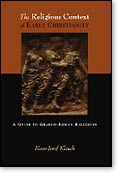 Even the early Yuletides, before I knew Christ, remain unforgettable. For Santa Claus emerged each Christmas Eve, armed with a broom, demanding that we eight youngsters confess our misdemeanors; then, forgiving all, he stuffed our stockings with holiday treats.My circle of Christmas widened quickly when as a young newspaperman I found Christ. College and seminary days brought into that circle many now serving him in worldwide vocational commitments. Then faculty-student years multiplied friendships with young intellectuals who today fill many posts of spiritual leadership.Christmas Eve is the time for sharing gifts in our home. But the first hour is set aside for reading greetings that come from near and far. Life, after all, has few higher treasures than loyal friends. In recent years the size of the CHRISTIANITY TODAY family has made it quite impossible to reciprocate every greeting personally. So to the twice-born family of God, here is my heartfelt wish: May the incarnate Lord’s birthday signal for each one the profoundest of personal joys.Memorable is a Christmas my wife Helga and I spent in the old city of Jerusalem several years ago. Worshiping in Bethlehem’s Shepherds’ Fields and in the beautiful Jordan YMCA (now scarred by war damage), hearing jubilant midnight chimes from St. George’s, and strolling through the Holy City on Christmas Day left indelible entries in this editor’s notebook of Christmas experiences. Even the early Yuletides, before I knew Christ, remain unforgettable. For Santa Claus emerged each Christmas Eve, armed with a broom, demanding that we eight youngsters confess our misdemeanors; then, forgiving all, he stuffed our stockings with holiday treats.My circle of Christmas widened quickly when as a young newspaperman I found Christ. College and seminary days brought into that circle many now serving him in worldwide vocational commitments. Then faculty-student years multiplied friendships with young intellectuals who today fill many posts of spiritual leadership.Christmas Eve is the time for sharing gifts in our home. But the first hour is set aside for reading greetings that come from near and far. Life, after all, has few higher treasures than loyal friends. In recent years the size of the CHRISTIANITY TODAY family has made it quite impossible to reciprocate every greeting personally. So to the twice-born family of God, here is my heartfelt wish: May the incarnate Lord’s birthday signal for each one the profoundest of personal joys.Memorable is a Christmas my wife Helga and I spent in the old city of Jerusalem several years ago. Worshiping in Bethlehem’s Shepherds’ Fields and in the beautiful Jordan YMCA (now scarred by war damage), hearing jubilant midnight chimes from St. George’s, and strolling through the Holy City on Christmas Day left indelible entries in this editor’s notebook of Christmas experiences. |
The Religious Context of Early Christianity: A Guide to Graeco-Roman Religions Hans-Josef Klauck |
Klauck discusses civic and domestic religion, the mystery cults, popular belief (astrology, soothsaying, miracles, magic), the cult of rulers and emperors, philosophy, and gnosticism. He includes a copious bibliography on each of the 160 subtopics. Here is a reliable and thorough guide, illustrated by well-chosen quotations, of the religious context of early Christianity.
Everett Ferguson, author of the widely-used textbook Backgrounds of Early Christianity and a member of the Christian History advisory board
Copyright © 2009 by the author or Christianity Today/Christian History. Click here for reprint information on Christian History.
